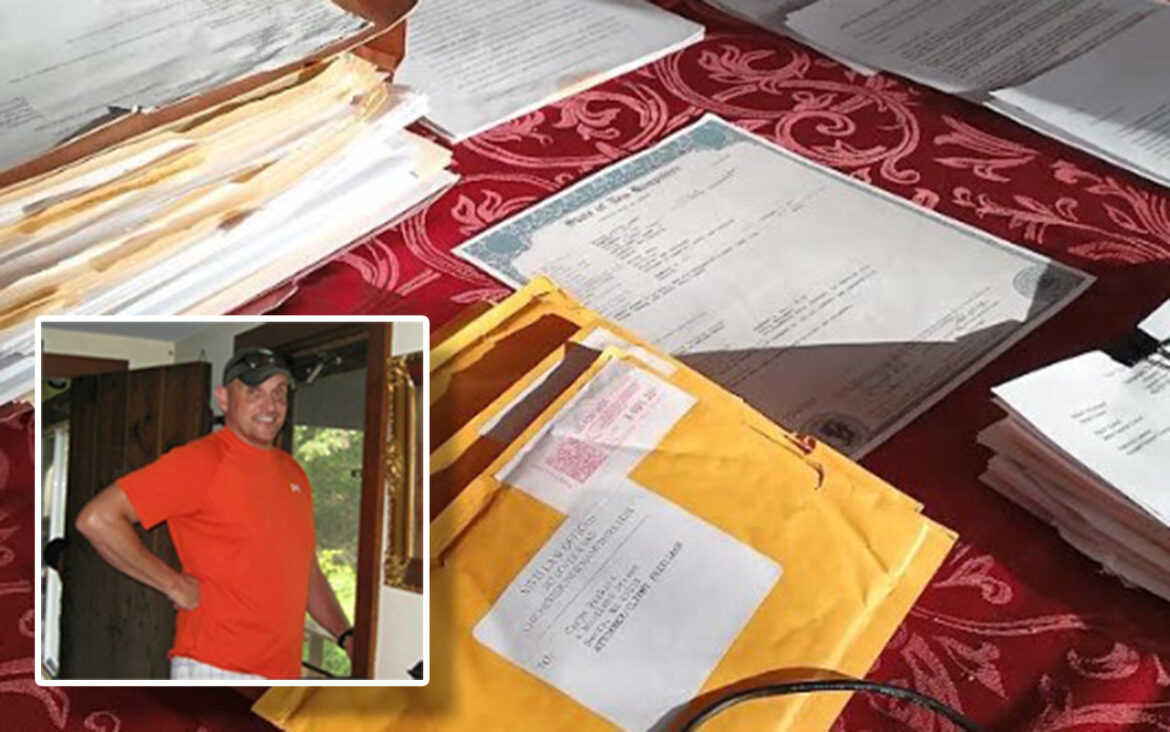Introduction to Damien Fisher’s final story in the three-part series: Caryn Perkins fought for years to get answers in the death of her brother, Michael Carney. She never believed the official report, but did not know investigators were hiding evidence in the case. After almost eight years, Perkins does not trust law enforcement to tell the truth about her brother’s death.
Read Part One in the series here: Documents: NH State Police Hid Evidence Connecting Two Deaths or
https://indepthnh.org/2025/01/20/documents-nh-state-police-hid-evidence-connecting-two-deaths/
Read Part Two in the series here: Questions Still Unanswered From the Day Michael Carney Was Killed or
https://indepthnh.org/2025/01/21/questions-still-unanswered-from-the-day-michael-carney-was-killed/
By DAMIEN FISHER, InDepthNH.org
Caryn Perkins cannot let go.
The Derry resident has fought for years to get answers in her brother’s death, spending more than $10,000 on lawyers along the way, all to force the state to comply with her right-to-know requests.
“It’s ridiculous to put a family through this for 6 1/2 years,” Perkins said.
Perkins was devastated when her brother, Michael Carney, died in the 2017 shooting and she struggled to understand what had happened. Her little brother, who grew up with her in Derry, was a success. As Perkins saw it, he had a good career working in insurance, he was active in his community in Sullivan, and he was a devoted father to his sons from his first marriage.
She knew some of his troubles, too. She knew he drank. She knew his marriage to Nicole Carney had become strained, and certainly not helped by his own infidelity. But the official narrative that he was an abuser, that Nicole Carney was so frightened that when she shot him behind the ear and in the back it would be deemed self-defense, was almost beyond comprehension.
When the New Hampshire Attorney General’s report on the Feb. 9 shooting was released in the summer of 2017, Perkins was shocked. She says the official report took her comments out of context to make it fit with the self-defense narrative. Kelly Connor, Michael Carney’s best friend, felt the same thing after reading the report.
But Perkins couldn’t get answers about the investigation that resulted in that report.
“How do you rebut what they are saying if they won’t give you any of the information to go through,” she said.
The more she considered the report, and what she knew about her brother, the less Perkins was willing to accept the official story. Perkins eventually took her questions about the shooting to New Hampshire State Police Detective Shawn Skahan in 2019.
Skahan had his own misgivings about the way Michael Carney’s death was investigated based on something Perkins did not know. Skahan was on the team investigating the shooting in 2017, and he was ordered to ignore the connection between Nicole Carney and Keene Police Chief Brian Costa, the connection Nicole Carney tried to hide.
Hours before his retirement from the State Police was official in November of 2019, Skahan sent an email to his superiors with his concerns about the investigation, including his belief the connection between Nicole Carney and Brian Costa was central to understanding what had really happened.
Nicole Carney deleted texts with Costa, as well as call logs and Costa’s contact information from her phone after she shot and killed her husband inside her Stoddard home. According to the reports that have since been released, Costa never told investigators about his relationship with Nicole Carney.
Instead, on March 7, 2017, Costa learned from State Police Lt. Joseph DiRusso some of the deleted texts had been recovered by Cheshire Deputy Sheriff Todd Faulkner. Costa then disclosed to DiRusso his information would be found. Two days later, Costa took his own life.
Skahan was uneasy when DiRusso later ordered him and Faulkner to drop Nicole Carney’s connection with Costa. At that point, investigators knew Nicole Carney was texting with Costa throughout the day on Feb. 9, 2017, including a text conversation happening at 7:25 p.m., that may have been around the time Michael Carney was shot. They also knew Nicole Carney called Costa before police arrived and there was a nine second call.
The original report released by the Attorney General’s Office went into detail about Nicole Carney’s texts that day with Michael Carney and others, but Costa was never mentioned in the report.
Instead, the official narrative focuses on Michael Carney, his drinking, allegations of physical abuse, and his anger on Feb. 9, 2017, when he learned for the first time his wife was not living with her mother in Troy but had instead been living in the Stoddard house she bought in secret months earlier.
Caryn Perkins didn’t know anything about Nicole Carney’s connection to Costa, and neither did the public.
Skahan’s 2019 email forced State Police to conduct a second investigation to review the shooting. In the reports and interview statements done for that second investigation are curious facts beyond the connection to Costa. There’s three 911 calls Nicole Carney made, at 7:07 p.m., 7:47 p.m., and 7:49 p.m. There’s the witness statements about Nicole Carney’s friend, Kris Walker, being in the house at the time of the shooting. Then there’s the fact that Michael Carney never made any statements threatening physical harm to Nicole Carney in his many texts that day, according to Faulkner.
“My brother was not a violent man,” Perkins said.
But the second investigation closed without a change in the ultimate disposition. Michael Carney’s death is still considered self-defense by the New Hampshire Attorney General’s Office. And even after the second investigation closed, Perkins was blocked from getting documents for years.
Once she got ahold of the documents, and saw the evidence that investigators were ordered to ignore, Perkins feels vindicated in her misgivings about that first investigation. But that leaves her with the realization the state’s official conclusions about her brother’s death may not be the truth.
“How can you trust anything they say,” Perkins said.





